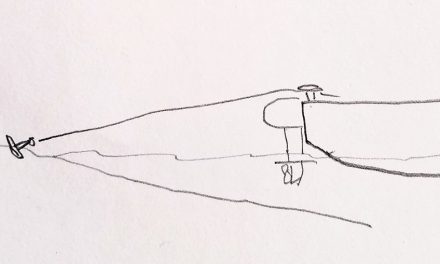
In The Seaworthy Offshore Sailboat, John Vigor offers a hands-on guide to the evaluation and upgrading of a production fiberglass boat for long-term bluewater cruising. He shows what to look for, what to avoid, what equipment to buy or make, and how to get ready for the big move. John uses the price of a beer to add up the cost of various pieces of equipment mentioned in his book. He does this because retail prices change quickly. “At any date in the future, you need only to inquire after the current retail price of a bottle of beer served in a restaurant or a yacht club bar, and simple multiplication will give you a pretty good idea of the current price of the equipment mentioned in this book,” he says. An interesting theory.
John compares characteristics of coastal versus offshore cruisers. He emphasizes the importance of the ability to maneuver clear of dangers in all kinds of weather and the “habitability factor” to accommodate human beings comfortably and safely. The design must allow the boat to right herself quickly from capsize and to resume her voyage safely.
His unique diagnostic questionnaire tells us if our boat is capable of offshore voyaging, and his step-by-step illustrated instructions show us how to refit for ocean passages. Once you have passed the seaworthiness indicator test, you move on to the detailed inspection of the hull, deck, cockpit, and rudder with descriptions of necessary repairs or modifications.
The end of each chapter lists a synopsis of helpful hints relevant to it with the heading “Think Inverted.” This brings forth such pleasant thoughts as, “Is there a quick-release snap hook or carbiner right there at your chest soyou can reach it to free yourself if you’re dragged underwater?”
Those with Atomic 4s will cheer to read: “There is a modern fashion for replacing gasoline engines with diesels, but this is not always the wisest move. Gas engines are cheaper, lighter (or more powerful for the same weight), easier to repair and service, quieter, and much smoother-running.” (See Good Old Boat article on the subject in the June 1998 issue.) However, if you insist on changing, John advises you to aim for 3 or 4 hp for each ton of boat weight. “If you’re determined to have a dirty, smelly engine, it might as well be a powerful, dirty, smelly engine,” he summarizes.
John believes that there are more forces than luck involved in survival at sea. Cautious and intelligent preparation is necessary, so his chapter on safety equipment goes over all you need to know including how to deactivate your self-steering gear in case you fall overboard.
“No one who has experienced the tyranny of the tiller will ever go to sea again without some form of self-steering device . . . for no more fiendish a punishment could be devised than to force a sailor to sit at the helm hour after hour, day after day, week after week,” pleads John. This chapter gives you a good understanding of the theory of CLR (center of lateral resistance), secret forces, weather and lee helms, directional stability, flattening the sail, raking the mast, autopilots, wind-vane gears, and twistle yards.
John Vigor has given us a book which not only hands us practical advice in a clear format but also the hope that an offshore voyage is fully within our grasp if we are willing to follow his road map. For the price of 10 beers, the purchase of The Seaworthy Offshore Sailboat is a bargain to add to our nautical library.
The Seaworthy Offshore Sailboat: A Guide to Essential Features, Gear and Handling by John Vigor (International Marine, 1999)




